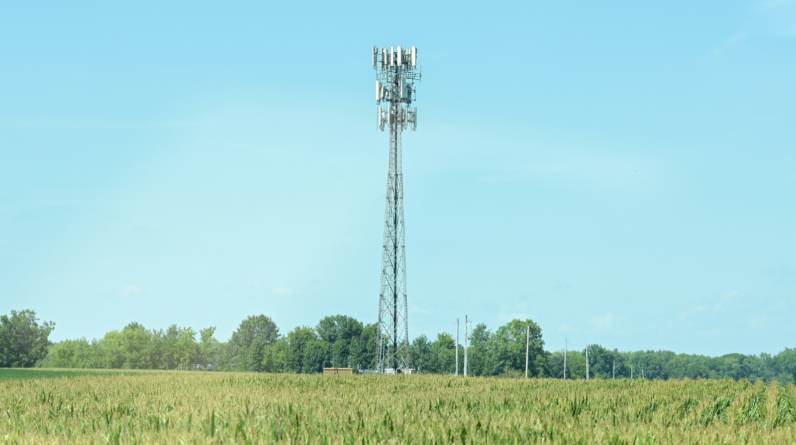
[ad_1]
Photo by Nathan Anderson on Unsplash
Most Canadians take for granted — or deeply resent — the fact they can log into a Zoom meeting at will. Many will never pause to consider the impacts of not being able to do so.
But it’s not just Zoom meetings. It’s remote medicine, networking, online education, research, and staying in touch. Connecting to the Internet, and doing so at sufficient speed, is a critical component of contemporary society and business.
Lacking connection means missing out on work and play — which is a hard reality for many in Indigenous and rural communities.
According to a recent Auditor General’s report, while 91% of households across Canada had access to high-speed Internet in 2021 — defined as 50 megabits per second downloads and 10 megabits per second uploads — only 60% of rural households had the same. That number fell to 43% on First Nations reserves.
The implications of that digital divide can be profound.
Marty Klyne, a Canadian Senator who represents Saskatchewan, said in a recent blog post that “colonialism, systemic racism and the multi-generational legacy of residential schools” have held back First Nations prosperity and that will only get worse as the world moves online.
The challenges of bridging the divide are immense, but there are solutions and there is hope. Funding, yes, but also First Nations communities are also claiming their own digital sovereignty through building capacity in their communities and pushing back against high prices and barriers to careers in tech.
“Internet access needs to be on the same line as utilities like power and heat,” says Ryan Thomas, the owner of Indigenize Tech, based in Saskatchewan. “And not as a luxury.”
Building the infrastructure
Indigenize Tech started with the goal of providing IT solutions to Indigenous communities to help build sovereignty and allow community members interested in tech to stay and work in their communities.
“One of our mandates is if we do things like wifi projects, we make a point to try and hire local. We train local guys,” he says.
Thomas says too many nations were being taken advantage of by paying for things they didn’t need and overpaying for the things they did — including online backup systems that can’t be used due to poor connectivity, smartboard systems for meetings and overpriced IT services.
The company morphed to include providing Internet access that considers both costs and connection speeds. They achieve this by building fixed wifi networks, where central towers connected to fibre optic lines beam signals to satellite dishes mounted on homes.
It’s one way to tackle a central challenge in rural and Indigenous communities: linking high-speed internet is expensive and the communities are often small and economically disadvantaged. Thomas says companies that build networks or use satellites often charge big money to connect.
“Not only is the technology creating divisions, it also goes into economic divisions,” Thomas says.
Mobility and work
With poor Internet connections and little in the way of tech work on reserves or rural communities, many are forced to move to urban areas. It’s something Thomas is trying to help alleviate, but it’s a persistent issue.
According to a 2022 survey and report from the First Nations Technology Council that focused on British Columbia, rural and on-reserve respondents highlighted significant barriers to working in tech — from transportation, to connectivity to “living in a place with few work opportunities.”
And while not directly tied to tech, the latest census showed the number of Indigenous Canadians living in major urban centres increased 12.5 per cent between 2016 and 2021.
Indigenous women can be hit particularly hard when it comes to mobility.
Alina Perrault oversaw the Indigenous Women in Tech program for Ethical Digital, an organization dedicated to digital inclusion and respect. She says four significant barriers were identified by the program: access to funding; the need to relocate for training; the real or perceived need for personal development to enter the tech sector; and the demands of childcare and family.
Indigenous women are more closely tied to their communities and are often dealing with the challenges of being single mothers, she says. And despite many having bachelor degrees, they found it challenging to access funding and support to get certifications to make a transition.
“Indigenous women essentially had to choose between leaving their community and their support system and their culture,” says Perrault. “And basically pick their whole family up and move to an urban centre in order just to acquire training — let alone actual careers in tech.”
This results in fewer Indigenous Canadians, particularly Indigenous women, being represented in tech. This lack of representation further exacerbates barriers to inclusion and the connections needed to enter and thrive in any industry.
The power and the promise of youth
The challenges go beyond bringing existing workers into the fold. According to a recent report from RBC, 750,000 Indigenous youth will move into the workforce over the next decade.
That contingent is the “fastest growing cohort of Canadian youth” and is expanding “four times quicker than the non-Indigenous population,” according to RBC.
But they require digital training and high-speed Internet equal to their peers across Canada in order to succeed.
The same report notes almost two-thirds of jobs currently held by Indigenous workers are at risk of a digital overhaul from technologies including big data and robotics, and says if the GDP of Indigenous communities matched the rest of Canada, it could increase from $33 billion to $100 billion.
Following the annual ‘Indigenomics Bay Street’ conference held in Toronto last November, Indigenous leaders gathered with government and corporate partners to focus on growing the Indigenous economy in Canada to make the goal of hitting $100 billion a reality.
Carol Anne Hilton, founder of the Indigenomics Institute, told the CBC that the rising economy in Indigenous communities is good for Canada’s economy as a whole.
Strategies for solutions
Both Thomas and Perrault say there has to be more government funding — and more consistent funding — provided to establish the basics of a digital economy for Indigenous communities, and there has to be more accountability in how that funding is spent.
The federal government has billions to spend on connection in rural and Indigenous communities, with the goal of connecting 100% of households by 2030, but that money is flowing more slowly than anticipated and isn’t necessarily hitting the right targets.
The Auditor General noted affordability wasn’t factored into the government’s evaluations of success and neither were the subscription rates to Internet connections it helped fund.
Affordable pricing was established by the federal government based on comparative national and international rates but didn’t factor local conditions or income in deciding if a service was affordable in practice.
“There needs to be some accountability and oversight,” says Thomas.
His company partners with First Nations and helps them apply for the funding that is available with the expectation they will use those funds to pay Indigenize Tech to build the infrastructure and bring resilience to the community.
Perrault says there is the opportunity, but it requires a different way of thinking if companies are serious about supporting Indigenous communities and tapping into new perspectives.
Doing so can help companies overcome the well-documented discrimination that can be built into tech when the workforce is less diverse, and overcome barriers to hiring from a surging youth demographic.
The First Nations Technology Council survey noted companies could overcome those built-in hiring barriers by having closer contact with Indigenous communities and by having access to dedicated recruitment websites.
One of the things Perrault heard from tech industry execs was that they tried to reach out to Indigenous communities and just didn’t get anywhere.
“What have you done? Have you gone to the reserve? You’re not able to just send emails, you have to get dirty, gotta get your feet on the ground and meet people,” she says.
“Before trying to prescribe what you think populations need, you need to ask them what they want.”
There are billions of reasons to get it right.
[ad_2]
Source link






